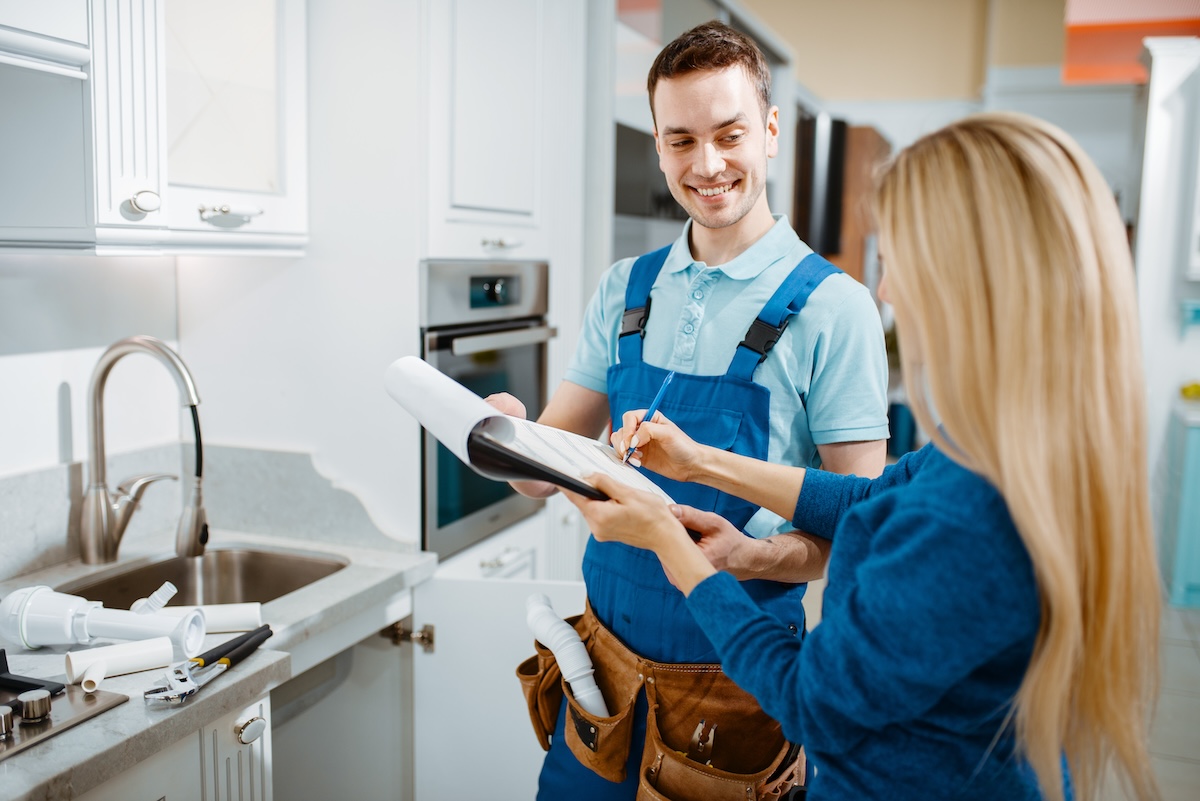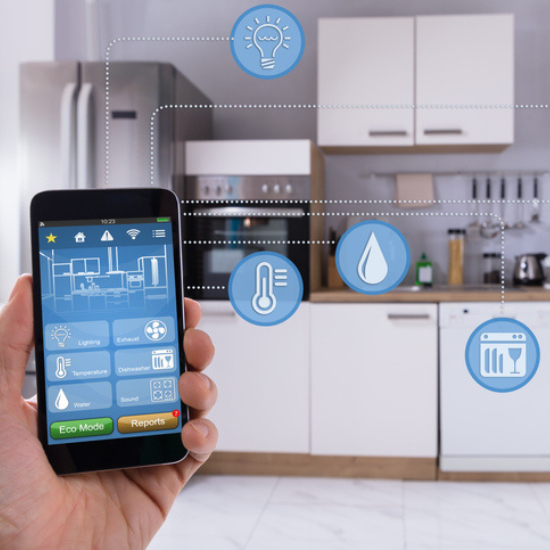A of Plumbing: Emerging Developments and Innovations
A of Plumbing: Emerging Developments and Innovations
Blog Article
They are making a few good pointers about 7 Plumbing Industry Trends You Need To Know as a whole in this post just below.

Introduction
The pipes market is going through a transformative stage driven by technological advancements and expanding worries for sustainability and performance. This short article discovers emerging patterns and technologies shaping the future of plumbing.
Regulatory Landscape
Governing frameworks play a critical duty in shaping the fostering of pipes innovations, with standards and codes governing everything from water effectiveness to item safety. As technologies remain to develop, regulative bodies need to adjust to ensure customer protection and environmental stewardship.
Future Expectation
The future of pipes is identified by continued innovation and combination with various other fields such as IoT, renewable resource, and building automation. By accepting lasting techniques, leveraging arising innovations, and prioritizing user-centric layout, the plumbing market is positioned to attend to the evolving needs of society while minimizing its environmental footprint.
Increased Fact in Pipes
Increased Truth (AR) innovation is changing plumbing by supplying technicians with real-time visual advice for repairing and repair work tasks. AR-enabled wise glasses or mobile applications overlay digital information onto the physical environment, assisting plumbers envision pipe formats, determine hidden leaks, and execute fixings with accuracy.
Impact of 3D Printing
The arrival of 3D printing has introduced new possibilities in making plumbing parts. From custom-made fixtures to intricate pipeline installations, 3D printing permits rapid prototyping and on-demand manufacturing, decreasing lead times and enabling greater customization in pipes layout.
Health And Wellness Characteristics
In feedback to enhanced worries for health and wellness, plumbing components are integrating functions such as antimicrobial surfaces, touchless operation, and self-cleaning devices. These innovations not just boost hygiene yet also promote customer convenience and benefit.
Hygiene-focused Components
Touchless taps, self-sanitizing toilets, and antimicrobial surface areas are becoming increasingly widespread in domestic and business settings, lessening the threat of bacterium transmission and advertising a cleaner, much healthier setting.
Water Top Quality Surveillance
Developments in water quality surveillance technologies enable homeowners to monitor the pureness and safety of their supply of water in real-time. Smart water quality sensing units can discover pollutants, pH degrees, and temperature level variations, encouraging users to take proactive steps to make certain water security.
Remote Pipes Providers
Remote diagnostics and virtual aid are revolutionizing the method pipes services are delivered. With video conferencing and remote accessibility technologies, plumbing professionals can repair issues, supply support for do it yourself repair work, and also do remote assessments, using higher accessibility and benefit to house owners.
Challenges and Opportunities
While pipes technologies hold tremendous pledge, they also present obstacles such as data personal privacy issues, governing conformity, and the need for labor force training. Addressing these challenges calls for partnership in between industry stakeholders and regulative bodies to guarantee secure and accountable implementation of brand-new modern technologies.
Smart Pipes Solutions
Integrating smart innovation right into plumbing systems enables remote surveillance, leak discovery, and automated upkeep. Smart sensors and IoT (Internet of Things) devices enable homeowners and plumbing professionals to check water usage and spot problems in real-time, bring about more effective resource monitoring and proactive maintenance.
Water Performance Solutions
With increasing emphasis on water conservation, innovative services are being created to decrease water wastefulness in pipes systems. High-efficiency fixtures, greywater recycling systems, and smart watering controllers are amongst the modern technologies aiding customers lower their water footprint while preserving comfort and convenience.
Lasting Materials
The change towards sustainability reaches plumbing materials, with a growing choice for environment-friendly alternatives. Biodegradable piping materials, such as PEX (cross-linked polyethylene) and HDPE (high-density polyethylene), deal resilience and resistance to deterioration without jeopardizing ecological honesty.
Predictive Maintenance
Predictive maintenance methods utilize information analytics and machine learning formulas to anticipate and avoid plumbing concerns prior to they happen. By assessing historical information and performance metrics, predictive upkeep formulas can recognize patterns and anomalies, enabling proactive treatments to prevent costly repair work and disruptions.
Conclusion
To conclude, the future of pipes is defined by a merging of technology, sustainability, and user-centric style. By welcoming wise services, sustainable products, and proactive upkeep techniques, the pipes sector can improve effectiveness, promote safety and security, and add to a much more lasting future.
The Future of Plumbing: Trends and Innovations to Watch
Introduction to Future Plumbing Trends
The future of plumbing is being shaped by several key factors, including technological advancements, environmental concerns, and changing consumer expectations. These factors are driving the development of new products, services, and practices that enhance the efficiency, sustainability, and convenience of plumbing systems.
Key Trends and Innovations in Plumbing
Smart Plumbing Systems: The integration of smart technology into plumbing systems is transforming the way we manage water usage and detect issues. Smart leak detectors, automated water shut-off valves, and smart faucets are just a few examples of how technology is enhancing plumbing systems. These devices provide real-time data and remote control capabilities, allowing homeowners to monitor and manage their water usage more effectively. Water Conservation and Efficiency: With increasing concerns about water scarcity, there is a growing emphasis on water conservation and efficiency. Innovations such as low-flow fixtures, greywater recycling systems, and rainwater harvesting are becoming more popular. Plumbers are adopting these technologies to help customers reduce their water consumption and save on utility bills. Sustainable Materials: The use of sustainable materials in plumbing systems is gaining traction. This includes the adoption of recyclable and biodegradable materials, as well as the use of non-toxic and eco-friendly products. Sustainable materials help reduce the environmental impact of plumbing systems and promote long-term sustainability. Energy-Efficient Water Heaters: Advances in water heating technology are leading to the development of more energy-efficient systems. Tankless water heaters, solar water heaters, and heat pump water heaters are becoming more prevalent. These systems offer significant energy savings and reduce the carbon footprint of homes and businesses. Trenchless Technology: Trenchless technology is revolutionizing the way plumbing repairs and installations are conducted. This method allows for the repair or replacement of pipes without extensive excavation, minimizing disruption and reducing costs. Techniques such as pipe bursting and cured-in-place pipe (CIPP) lining are gaining popularity. Health and Safety: The focus on health and safety is driving innovations in plumbing systems. Touchless faucets and fixtures, antimicrobial materials, and improved water filtration systems are being developed to enhance hygiene and protect public health. Plumbers are adopting these innovations to meet the growing demand for safer and healthier plumbing solutions. Remote Diagnostics and Monitoring: The ability to diagnose and monitor plumbing systems remotely is becoming increasingly important. Remote diagnostic tools and sensors allow plumbers to identify issues and perform maintenance without the need for on-site visits. This enhances efficiency and reduces the need for costly emergency repairs. Impact of Future Trends on the Plumbing Industry
Enhanced Efficiency: The adoption of smart technology and energy-efficient systems will enhance the efficiency of plumbing systems. This will lead to reduced water and energy consumption, lower utility bills, and improved performance. Sustainability: The focus on sustainability will drive the development and adoption of eco-friendly plumbing solutions. This will contribute to the conservation of natural resources, reduction of waste, and protection of the environment. Improved Customer Experience: The integration of technology and innovative solutions will improve the customer experience. Homeowners will have greater control over their plumbing systems, access to real-time data, and the ability to manage their water usage more effectively. Increased Demand for Skilled Plumbers: The adoption of new technologies and materials will require plumbers to acquire new skills and expertise. There will be an increased demand for skilled plumbers who are knowledgeable about the latest trends and innovations. Cost Savings: The use of efficient and sustainable plumbing solutions will result in cost savings for both homeowners and businesses. Reduced water and energy consumption, lower maintenance costs, and fewer emergency repairs will contribute to overall affordability. Preparing for the Future of Plumbing
Stay Informed: Keep up-to-date with the latest trends and innovations in the plumbing industry. Attend industry conferences, participate in training programs, and engage with manufacturers to stay informed. Invest in Training: Ensure that you and your team are trained in the latest technologies and installation techniques. This will enable you to offer cutting-edge solutions to your customers and stay competitive in the market. Promote Sustainable Solutions: Highlight the benefits of eco-friendly and energy-efficient plumbing solutions to your customers. Educate them about the advantages of adopting sustainable practices and products. Leverage Technology: Embrace smart technology and remote diagnostic tools to enhance your services. Offer remote monitoring and maintenance options to provide added convenience and value to your customers. Collaborate with Manufacturers: Partner with manufacturers of innovative plumbing products to gain access to the latest solutions and technical support. This can also provide opportunities for joint marketing efforts. Focus on Customer Education: Educate your customers about the benefits and functionality of new plumbing technologies. Provide guidance on how to use smart systems and maintain sustainable plumbing solutions. Conclusion
The future of plumbing is being shaped by exciting trends and innovations that promise to enhance efficiency, sustainability, and convenience. By staying informed and embracing these changes, plumbers can provide superior services to their customers and contribute to a more sustainable future. The adoption of smart technology, sustainable materials, and energy-efficient systems will drive the evolution of the plumbing industry, creating new opportunities and challenges. By preparing for the future, plumbers can ensure their success in a rapidly changing market.

I found that write up about 7 Plumbing Industry Trends You Need To Know while doing a search on the web. For those who enjoyed reading our blog entry kindly consider to pass it around. Thank-you for taking the time to read it.
Click Here Report this page